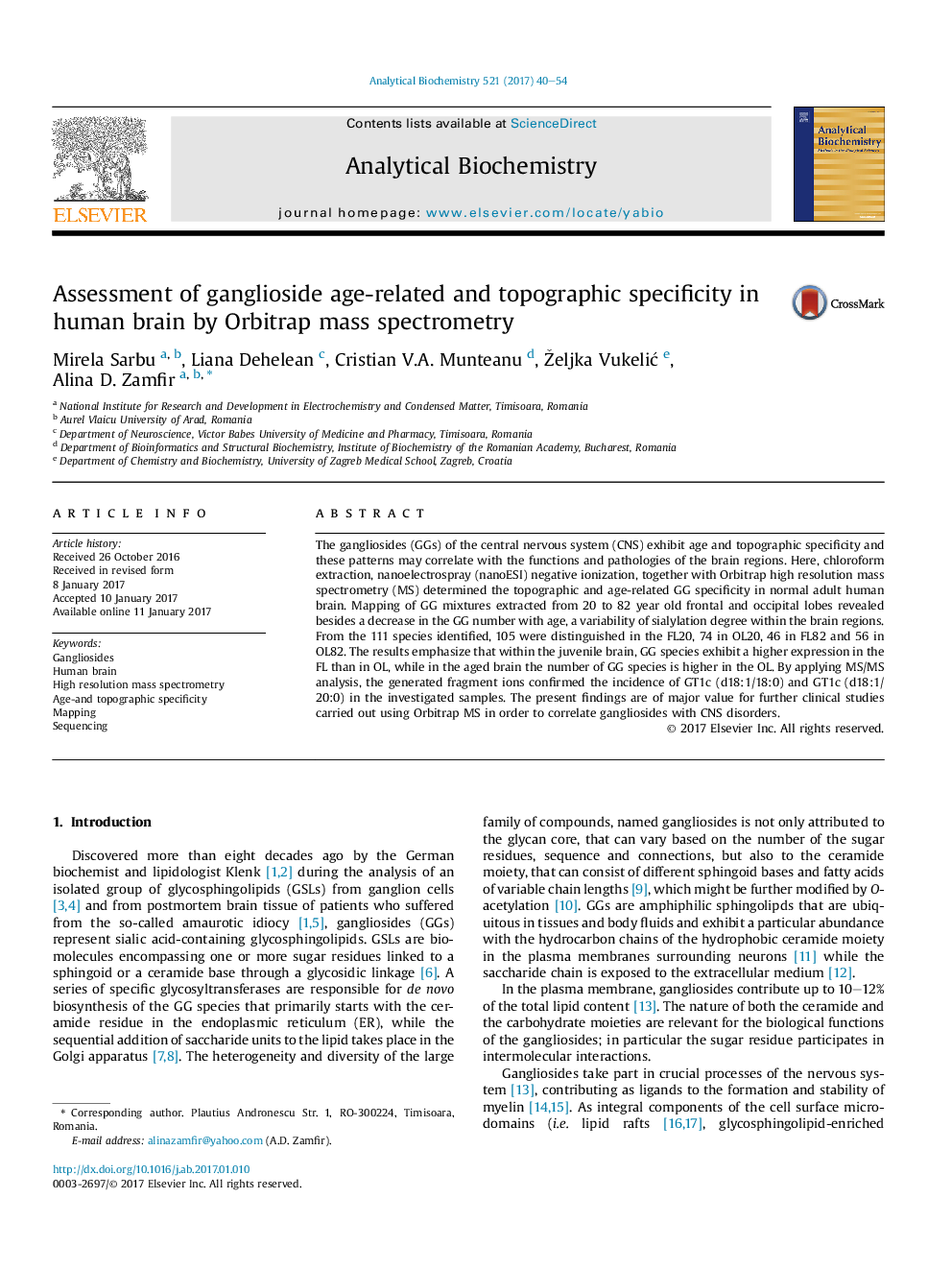| Article ID | Journal | Published Year | Pages | File Type |
|---|---|---|---|---|
| 5131633 | Analytical Biochemistry | 2017 | 15 Pages |
The gangliosides (GGs) of the central nervous system (CNS) exhibit age and topographic specificity and these patterns may correlate with the functions and pathologies of the brain regions. Here, chloroform extraction, nanoelectrospray (nanoESI) negative ionization, together with Orbitrap high resolution mass spectrometry (MS) determined the topographic and age-related GG specificity in normal adult human brain. Mapping of GG mixtures extracted from 20 to 82 year old frontal and occipital lobes revealed besides a decrease in the GG number with age, a variability of sialylation degree within the brain regions. From the 111 species identified, 105 were distinguished in the FL20, 74 in OL20, 46 in FL82 and 56 in OL82. The results emphasize that within the juvenile brain, GG species exhibit a higher expression in the FL than in OL, while in the aged brain the number of GG species is higher in the OL. By applying MS/MS analysis, the generated fragment ions confirmed the incidence of GT1c (d18:1/18:0) and GT1c (d18:1/20:0) in the investigated samples. The present findings are of major value for further clinical studies carried out using Orbitrap MS in order to correlate gangliosides with CNS disorders.
Graphical abstractDownload high-res image (235KB)Download full-size image
